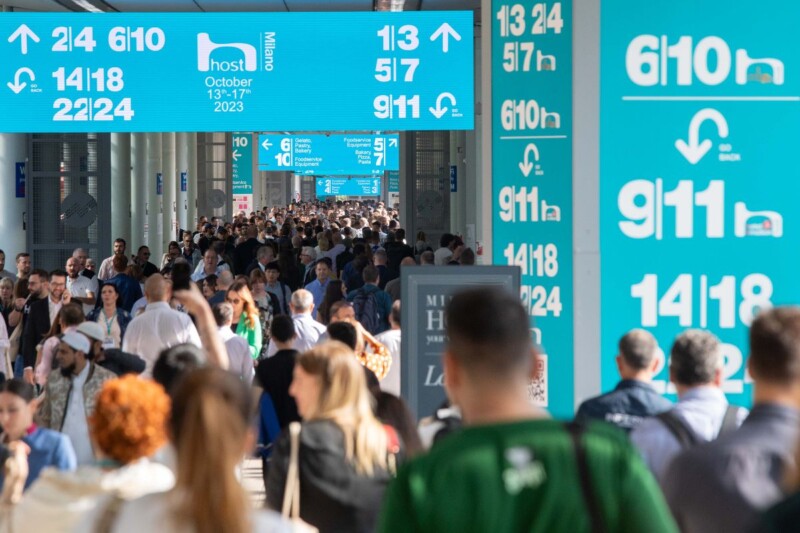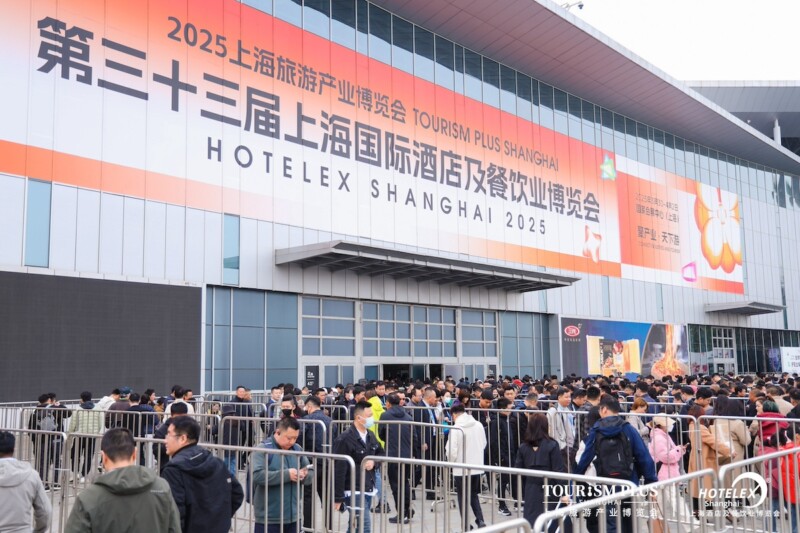Top Tips for Navigating Global Growth
Pack your bag with these tools and tips on making international inroads in today's landscape.
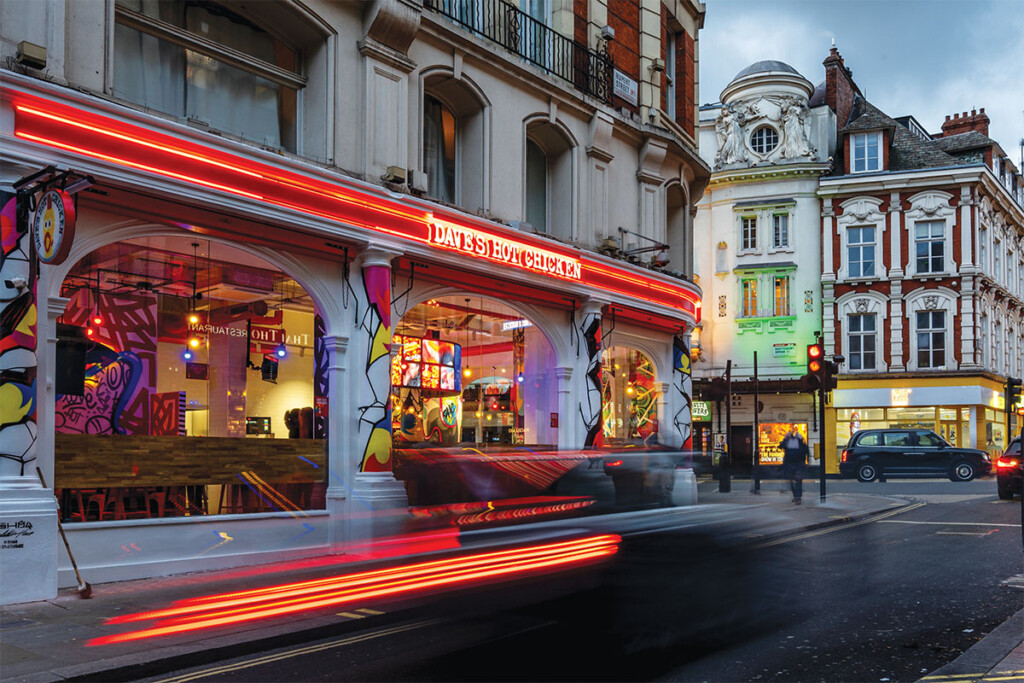
During an uncertain economic and political moment domestically, investing in a larger global footprint may seem like risky business. But, operators told FER, international growth is actually among the best ways to increase both brand awareness and profitability right now.
“This is our moment to seize the opportunity and create an enduring impact across borders,” says Antonio Bautista, chief international development officer at Dave & Buster’s. The arcade/restaurant chain, which operates about 170 locations across the U.S., Canada and Puerto Rico, opened its doors in Bengaluru, India, late last year. A Mumbai location is among the 15 additional India locations it has slated for this year.
Location growth in the U.S. has leveled out since the COVID-related dip—especially for QSRs—so today’s white space opportunities often lie outside the country. Asian and Middle Eastern countries in particular offer “tremendous expansion opportunities,” says David Henkes, senior principal and head of strategic partnerships at Technomic. Populations are booming, and younger diners are excited to experience global trends and flavors.
Post-COVID, customers are eager to dine out and take out. In 2023, total sales at the top 150 global chains were up 41% from 2020, hitting $556.3 billion, according to Technomic’s Global 150 Chain Restaurant Report 2024. (Increased food prices, due in part to inflation, also factor into this rise.)
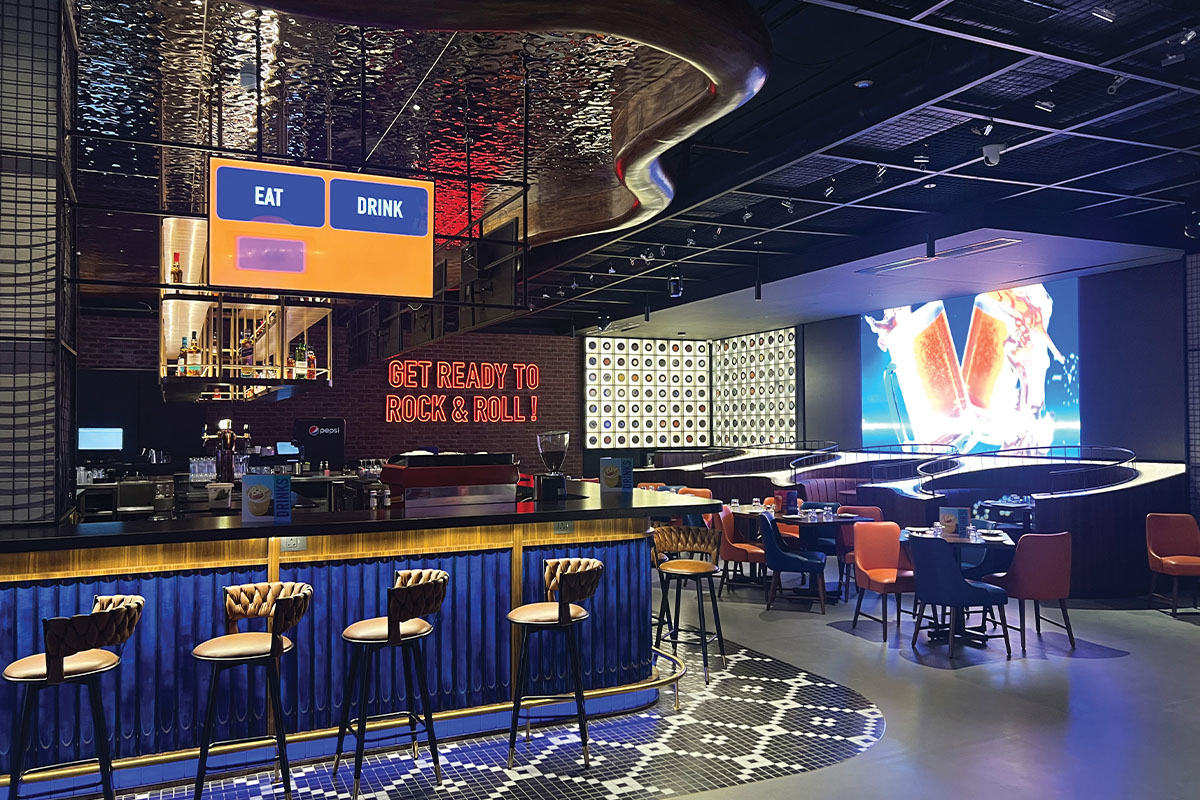
Dave & Buster’s opened in India in 2024 and says it will continue to grow its international footprint this year.
For many brands, including those with an existing international presence, the time may be right to explore new—or further—expansion outside of the U.S. Here are some suggestions from some of the growing chains that have been there.
To start, think intentionally. Unless you’ve recently stumbled upon a four-leaf clover, you probably shouldn’t rely on the strategy that led to Dave’s Hot Chicken going global.
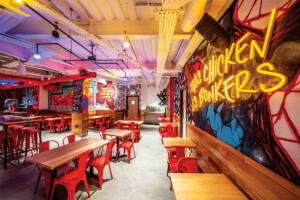
Dave’s Hot Chicken restaurants feature spray-painted decor for a consistent brand image.
“Dave’s has gotten lucky at every turn,” says Jim Bitticks, Dave’s president. “The franchisees we’ve been able to attract and sign have all been absolutely great, specifically when it comes to the international side.”
The California-based quick-service chicken chain wasn’t looking internationally when it was approached by Canadian businessman John Bitove in 2020. Bitove was a longtime franchisee for brands like KFC, Wendy’s and Tim Hortons, so the Dave’s team was confident in his ability to grow their brand across the border. Then, the same thing happened with a franchisee in the Middle East—and then, in the U.K.
Dave’s has since hired an international consultant to focus on more proactive, strategic growth. Bitticks and Chief Development Officer Carolyne Canady are eyeing Mexico, India and a few Asian countries for the company’s next locations. Detailed research not only helps a brand know where to grow, but what to expect before opening up shop in a new country—from tariffs to equipment availability to popular locations and footprints.
Build the tools for success. Brands’ international equipment strategies are primarily driven by one question: How much proprietary do you need?
Little Caesars, which franchises thousands of locations in dozens of countries around the globe, relies on proprietary equipment like dough mixers, ovens and its Pizza Portal, a heated, self-service mobile order pickup station. All the brand’s U.S. equipment is supplied by Blue Line Distribution, a wholly owned subsidiary of the franchise. So, when a new store in the Caribbean or Cambodia needs equipment, Little Caesars often ships out a Blue Line model.
“Some of those pieces of equipment are more proprietary than others, but we still want to make sure franchisees buy specific models to ensure a consistent product,” says Carlos Vidal, Little Caesars’ vice president of international development. Franchisees choose from a list of approved pieces of equipment for every nonproprietary item that enters a restaurant.
Equipment decisions are made country-by-country, Vidal says. For example, India charges enormous import tariffs, so the pizza chain works with a local manufacturer to build the exact product needed to the specs. Many brands rely on this approach; shipping equipment around the globe quickly becomes cost-prohibitive.
“Supply chain disruptions can also pose significant hurdles, with logistics bottlenecks delaying equipment shipments or increasing costs,” says Bautista, of Dave & Buster’s. “Building resilient logistics strategies and partnering with local suppliers helps mitigate these risks and ensure operational efficiency.”
Dave’s Hot Chicken, meanwhile, takes a different approach. “We built Dave’s from the beginning to be very franchisable, very scalable, so we haven’t gone the proprietary direction with any equipment,” Bitticks says. “For the most part, a fryer is a fryer is a fryer.”
But sometimes, operators run into equipment that other countries just plain don’t use. Bitticks recalls that shake machines were hard to come by when Dave’s Hot Chicken opened in Dubai. The solution: a soft serve machine and a blender. “It’s just a matter of creating a new procedure for that process,” he says.
Invest in technology to match global expectations. Digital customers are another major factor in sales growth at global chains. McDonald’s, for example, reported in its Q4 2024 earnings that it had more than 170 million 90-day active loyalty users across 60 markets; loyalty members spent $30 billion in 2024. “We know loyalty customers spend more than their nondigital counterparts,” President and CEO Chris Kempczinski said in the brand’s Feb. 10 earnings call. “We’ve made strong progress, and we’re on track toward our long-term targets of 250 million 90-day active users and $45 billion in annual systemwide sales by the end of 2027.”
Technomic’s Henkes says technology is another big factor behind the ease of growing restaurant units in Asia. “There’s more automation over there,” he says. “Many markets are very delivery- or takeout-oriented.”
The message to operators is clear: Keep your technology cutting-edge—both on- and off-premise—or lose out on major profits.
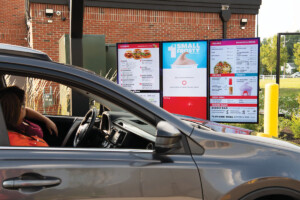
Off-premise order fluidity and new technology to accommodate digital orders are part of Wendy’s Global Next Gen design.
Dublin, Ohio-based Wendy’s built both technology and a global mindset into its current growth strategy. Beginning in 2022, all new locations of the burger chain are built to the Wendy’s Global Next Gen standard. Features include new galley-style kitchens to increase efficiency, and a dedicated mobile order pickup area, delivery pickup window and new technology to better accommodate digital orders.
“With Global Next Gen, we’re tapping into the power of design and innovation to create better returns for our franchisees and a better experience for our customers, delivery partners and crew,” says Dana Calvert, Wendy’s vice president and international chief development officer.
Little Caesars also is leaning into next-gen standards with its POD program, a literal restaurant-in-a-box that is built and shipped to the franchisee. The model, which can be manufactured in 90 days, allows for rapid growth in a smaller footprint (a little over 1,000 square feet, versus 1,400 to 1,600 square feet for a traditional store).
Physically meeting customers where they are is just as important as offering the tech they expect. Brands should be open to locations that may feel stale in the U.S.; Wendy’s is eyeing colleges, airports and gas stations for its next global moves. The first Qatar outpost of Dave’s Hot Chicken is in a new section of a mall, and “when we opened there, we were doing huge sales,” Bitticks says.
Create consistent brand experiences— with local flavor. Your restaurant’s equipment brands or flavor profiles may shift to meet an international market, but these changes must be balanced with a consistent brand experience. Every Dave’s Hot Chicken restaurant features spray-painted decor from street artists; the chain sent a U.S. painter overseas to train Middle Eastern artists in the Dave’s style. When customers walk in, they know they’re in the right place.
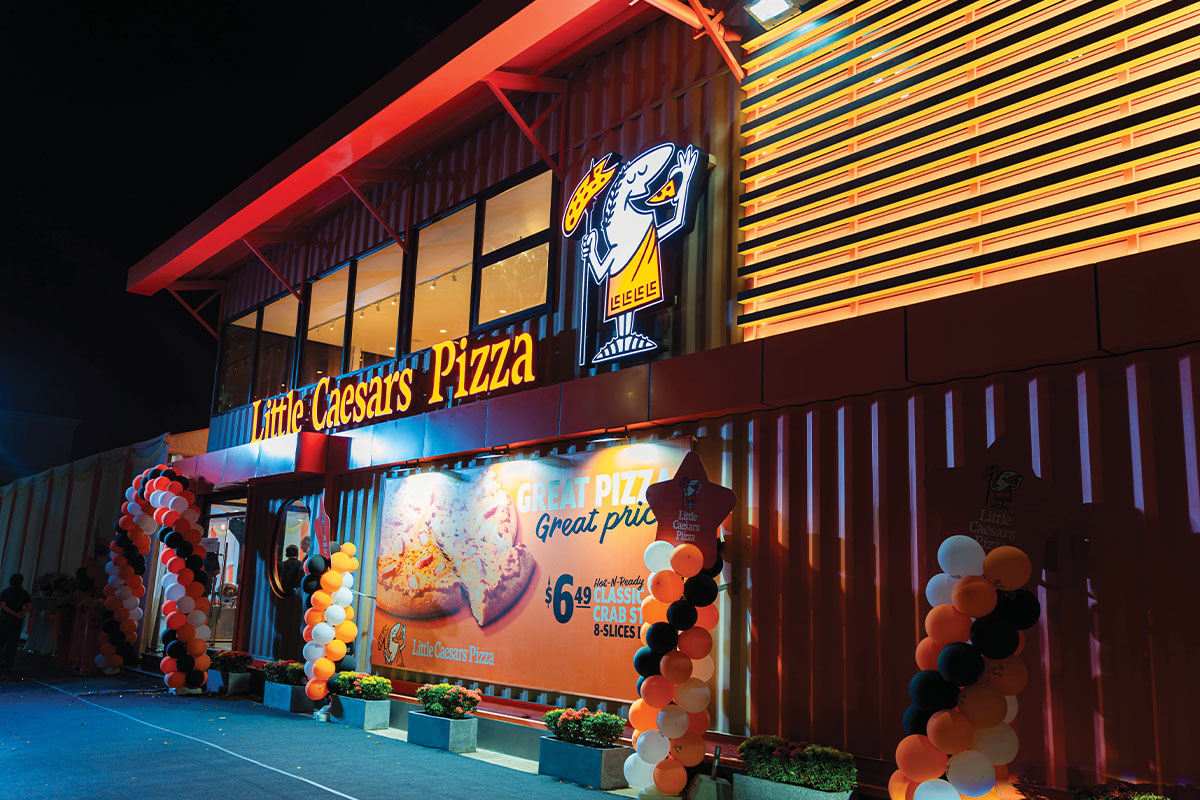
Cambodia was the 29th country for Little Caesars Pizza; there, it introduced crab stick pizza to appeal to local appetites.
Vidal, who’s looking at Brazil, Poland, the Philippines, Indonesia and South Korea among Little Caesars’ immediate target markets, agrees. “When you’re dealing with global products, there are always more similarities than differences; there’s probably 75% of the brand that will work without much change in the market,” he says. “The additional 25% that needs to be tailored will be integral to your success—or lack thereof. Being an internationally known brand helps, but how you’re able to adapt your brand to the local market will determine your success.”
“When you’re dealing with global products, there are always more similarities than differences; there’s probably 75% of the brand that will work without much change in the market.”
—Carlos Vidal, Little Caesars
What’s Trending on Global Menus
Burgers remain the No. 1 menu category for limited-service global 150 chains, according to Technomic data. But these three cuisines are coming in hot:
• Chicken
Sales grew 12% in 2023 to reach nearly $60 billion in total cumulative sales. That includes both U.S. players like Raising Cane’s, Wingstop and Popeyes, as well as global brands like Bb.q Chicken and Jollibee.
• Beverage
Starbucks is still the No. 1 global coffee brand, and the second-largest limited-service chain in the world. But Asian players like Luckin Coffee, Mega Coffee, Heytea and ChaPanda are rapidly expanding their store counts; Luckin alone grew 97.8% YOY in 2023.
• Frozen desserts
These sweet treats are a tiny category but grew at a blazing speed thanks to brands like China-based Mixue Ice Cream and Tea, which expanded by 26% in 2023.
Editor’s note: For more global growth perspectives and advice, see FER’s MUFES 2025 recap. There, representatives from Dickey’s Barbecue Restaurants, Famous Brands Int’l. (Mrs. Fields and TCBY) and Dine Brands spoke on a panel about the topic.
RELATED CONTENT
- Advertisement -
- Advertisement -
- Advertisement -
TRENDING NOW
- Advertisement -
- Advertisement -
- Advertisement -

